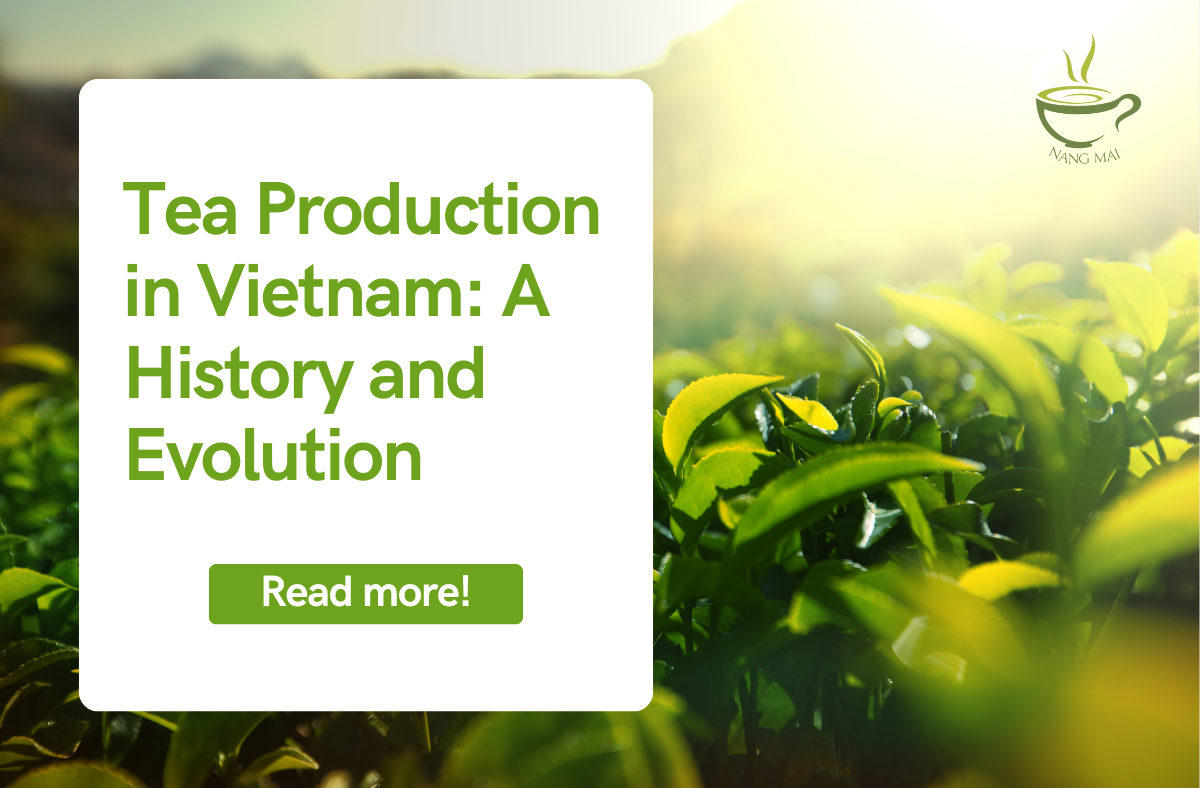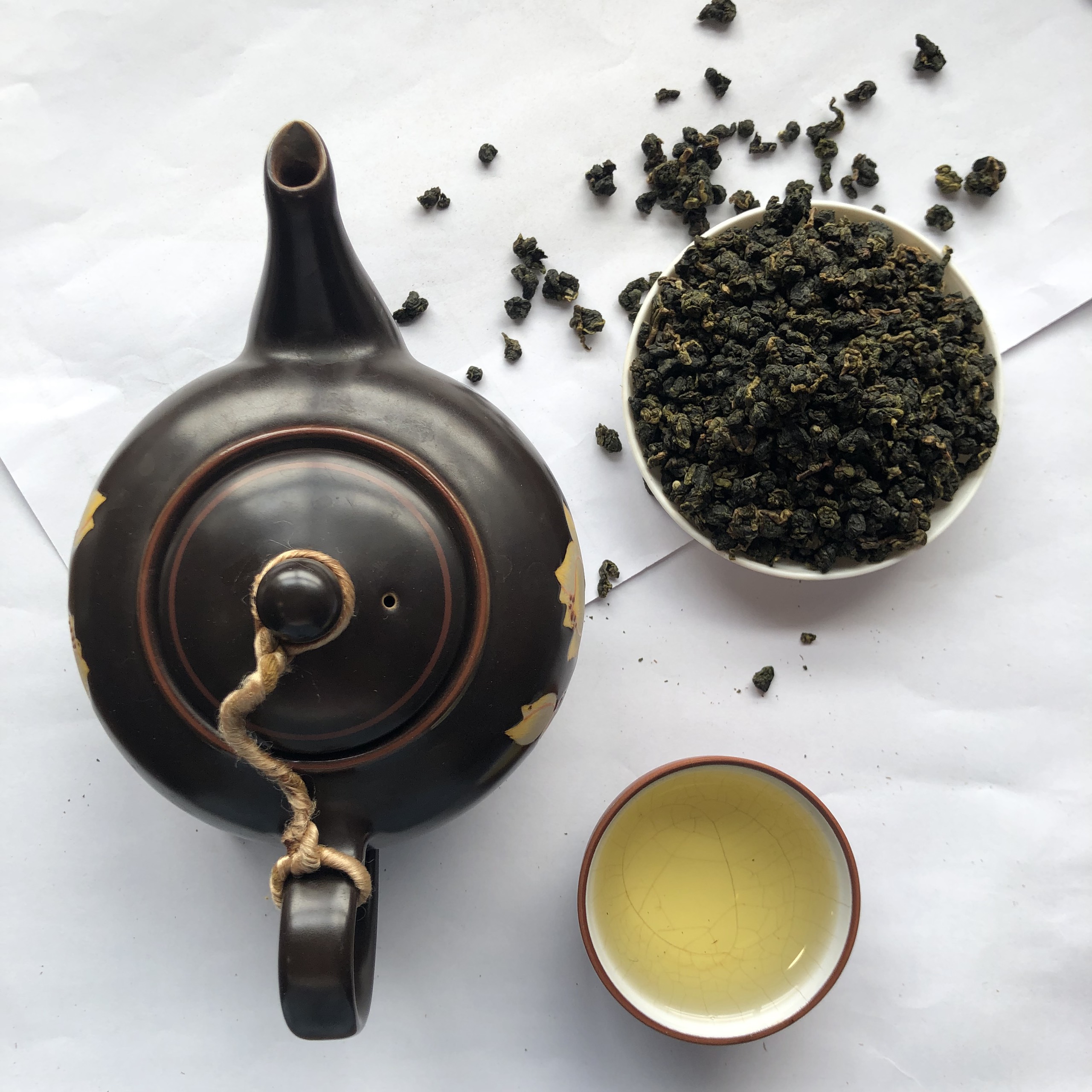
Ask people where tea comes from and not many will immediately think of Vietnam. Yet, according to the most recently published UN FAO statistics, Vietnam was the sixth largest producer and fifth largest exporter of tea in the world. This disconnect reflects the country’s strategy of quantity over quality.
As someone living in Vietnam who has had an interest in a tea business since 2010, I’m often asked, “What is tea in Vietnam like?” There is, of course, no simple answer. The largely commodity tea output overwhelms the gradual shift that has taken place in recent years to focus on higher quality and responsibly produced products. As yet, this is not in sufficient quantity to change the largely negative perceptions that exist.
Here, I will attempt to share some of what I have learned from many visits to Vietnam’s tea regions. It’s based on experiences of talking to and drinking tea with many farmers, families, and factory owners involved across the spectrum of tea harvesting and processing in the country. For simplicity, I will separate discussion into three topics: The wild indigenous tea trees, the initial development of the tea industry from the late 19th century, and the more recent growth of oolong tea production and its links to Taiwan.
The Historical Perspective
There is much in Vietnam that has been influenced in one way or another by its proximity to China. The two countries share a 1400 kilometer (870 mile) border through a mountainous terrain that separates Vietnam’s most northerly provinces from Yunnan in the west and the Zhuang autonomous region of Guangxi in the east.
For almost 1,000 years, up until the middle of the 10th Century, China ruled large parts of northern Vietnam. It was a period that saw a strong Chinese desire for cultural assimilation on one side and fierce Vietnamese resistance to foreign domination on the other. The Vietnamese eventually regained independence but legacies of religion, language, traditions, culture and of course, a love for tea remained.
To complicate matters, the rugged border region has long been the traditional home to many nomadic minority ethnic groups whose descendants continue to live on either side of the divide.
Wild Tea Trees
Wild tea plants can be found growing in several countries in the region and are, in fact, believed to be relics of past cultivation rather than truly wild plants. In Vietnam, areas of wild tea trees can be found in significant concentrations in the northern provinces of Ha Giang, Lao Cai, Yen Bai, Son La, Lai Chau, and Dien Bien.
The native trees are predominantly Camellia sinensis var. assamica although some Camellia taliensis also exist and are used for tea processing. Depending on environment and harvesting practices trees can ultimately grow to a height anywhere between five and fifteen meters (16 to 49 feet). Not an insignificant challenge when the leaves need to be picked.
Most wild tea trees grow in mixed forest environments on land managed by ethnic groups (in particular from the H’Mong and Dao minorities). Their previously nomadic lifestyle would have taken them to either side of a Vietnam-China border that remained poorly defined until the early 20th Century. Tea seeds were among the items that families would take with them on their migrations, facilitating the spread of cultivation and introducing tea trees to new locations. A story dating from the French occupation of Vietnam explains that tea was an accepted means of paying taxes demanded by the colonial government and this prompted further cultivation of tea trees. Although there are extravagant claims made for the age of tea trees my best guess is that by far the largest proportion of wild trees date to this period, somewhere between 100 and 150 years ago. There are, however, individual trees that have been reliably dated at between 500 and 700 years old.

Although families would have originally made their own tea it is now more common for the harvesting of leaves to be a separate practice from the processing of tea. Freshly harvested leaves are typically sold to small artisan producers or to collecting agents for the larger factories. In the case of small-scale production, processing continues to have a hand-made simplicity about it. Tea leaves are usually dried in wood-fired drum ovens (longan being the wood of choice) although examples of pan drying can also be seen in some places. Other than drying, a rolling machine is the only additional nod in the direction of technology. Small-scale production is generally limited to the processing of green and white teas.
The number of larger scale factories has seen a steady increase over recent years and demand for fresh wild tea leaves is at an all-time high. The growth in factory output includes not only Vietnamese branded green, black, white and pho nhi (the equivalent of heicha or pu’erh) teas but also teas destined for the Taiwan (mainly Chinese-style black teas) and China markets. Basic-processed wild tea leaves from Vietnam are an attractive and cheap source of product for the pu’erh tea manufacturers across the border in Yunnan. A Vietnam produced equivalent of pu’erh style tea (pho nhi) is available but good quality is difficult to find.
Wild tea is frequently marketed in Vietnam as shan tuyet. This translates literally to ‘Snow Mountain’ where the ‘snow’ refers to the fine white hairs that are prominent on the unopened buds of assamica leaves. Use of the term is not regulated or controlled in any way and so should be treated with caution. Used correctly it means that the tea has been made with leaves harvested from wild trees growing in the high mountain; it does not indicate any standard, style of tea or quality.
Over the years I have become a huge fan of wild teas where they have been expertly made. It is a very different drinking experience from the more typical low bush farmed teas and one where it can take a little perseverance to fully appreciate the differences. The attraction of wild tea for me is the bio-diverse and chemical-free origin of the leaves, together with the added complexity and depth of character that comes from deep-rooted trees, broad leaves, and the slow growth typical in mist-covered mountain conditions.
The Start Of Commercial Tea Production
Although there are a few historical Vietnamese texts referring to tea cultivation in different parts of Vietnam during the 18th Century there was no coordinated attempt to create a significant domestic tea industry until the French occupation when, in 1890, the first tea gardens were established at Tinh Cuong, Phu Tho province in the north and Duc Pho, Quang Nam province in the south. In the early part of the 20th Century, in an effort to promote development, research centers were established at Phu Tho, Pleiku in the central highlands, and Bao Loc in the western highlands.
The objectives of the tea research centers were to discover and develop hybrids and cultivars suitable for commercial farming in the different regions of Vietnam. Information is difficult to find as to where tea plants were originally sourced from for this research and may have included those already available in Vietnam as well as those brought in from China or Indonesia (where a thriving tea export industry had already been established by the Dutch). From my observations, farmed tea is almost exclusively Camellia sinensis var. sinensis.
The industry developed rapidly in the early years of the 20th Century but was effectively destroyed by the decades of conflict that prevailed between 194o and the late 1970’s. The tea research center at Phu Tho continues to operate although it now also has a responsibility for other produce grown in the north of Vietnam.
Tea is now farmed in almost half of Vietnam’s provinces in both the subtropical regions of the north and the highlands of the tropical south. Farming is largely a smallholder model despite a number of investments by large multinational companies. Demand and prices for fresh tea leaves are high which is good for farmers but encourages the indiscriminate use of chemicals to boost yields. Inconsistent agricultural practices and poor farmer education continue to have a detrimental effect on the reputation of the industry as a whole which is a shame for those producing high-quality teas. Commercial processing ranges from small family workshops to very large factories, while overall production is split equally between black and green teas.
The most famous center in Vietnam for tea is Thai Nguyen province which is located between Vietnam’s capital, Hanoi, and the mountains of the north. The signature tea of Thai Nguyen is the sweet but grassy green tea preferred (and brewed at extra strength) by Vietnamese tea drinkers. If there is such a creature as a typical Vietnamese tea drinker then they are looking for strong flavor and a long sweet aftertaste. For me, it was a shock at first but I soon discovered that the tea can just as easily be sympathetically brewed to delight my own palate.
A tea farming family that we have worked with for some time in Tan Cuong, a commune in Thai Nguyen noted for the sweetness of their teas, fetched their original tea plants from Phu Tho in 1918 and have been reproducing from both seed and cutting ever since. They farm one hectare themselves and have an interest in a further nine hectares from which they produce several grades of green tea. As with wild tea production, it remains a very low tech operation relying only on wood-fired ovens and rolling machines to supplement the tea master’s skill and experience.
A top quality Thai Nguyen green tea can be comparable to a Long Jing, as it has similar taste characteristics but with noticeably stronger taste. In fact, some farmers in the area have been replacing traditional Vietnamese bush varieties with Long Jing cultivars due to their higher yields and easier maintenance, despite them having a shorter productive lifespan.

The Oolong Explosion
Over the past twenty years the most rapid development in the Vietnamese tea landscape has been the introduction of oolong tea processing. This has been a particular feature in the Central Highlands province of Lam Dong, specifically in and around the cities of Bao Loc (800 meters) and Da Lat (1500 meters). Elsewhere oolong is produced in quantity on the Moc Chau plateau (1200 meters) in northern Son La province.
Many of these new enterprises are joint ventures or cooperation between Vietnamese and Taiwanese companies; the latter providing the expertise, technology, equipment, processing techniques and the tea plants. If the anecdotal evidence is to be believed then much of the oolong tea produced by these ventures is shipped to Taiwan and subsequently sold as local produce. (There has since been direct evidence of this.)
The main cultivars used in Vietnam for oolong production are (Vietnamese names in parentheses):
- Qing Xin (Thanh Tam) [Green Heart, or Green Centered]
- Cui Yu (Thuy Ngoc) [Green Jade]
- Si Gui, most likely Si Ji Chun (Tu Quy) [Four Seasons of Spring]
- Jin Xuan (Kim Tuyen) [Golden Lily]
- Tie Guan Yin (Thiet Quan Am) [Iron Goddess of Mercy], to a lesser extent.

Oolong tea production follows Taiwanese standards for harvesting and processing and mirrors Taiwanese styles in the tea produced. There are some very fine examples which can compare very favorably (particularly from a price/value point of view) with mid-range alternatives from elsewhere. Production also includes examples of Oriental Beauty, Gui Fei, and Gaba oolong which are carried off to different levels of quality from average to excellent.
In Summary
Vietnam is a country full of contrasts and this is a description that can equally be applied to the country’s tea industry. It has ideal growing conditions and produces some wonderful teas but continues to focus almost exclusively on high quantity commodity products. The industry’s outlook is to deliver additional extensive growth over the next eight to ten years. If growth can exist alongside the development of specialty quality teas then all well and good, but the worry is that the drive for volume will put pressure on more traditional growers, especially in those areas supporting wild trees.
Teas from Vietnam are still very little known. The bulk of black and green tea exports are destined for blends or for cheaper markets such as Russia, Bangladesh, and the Middle East. The best oolongs find their way to Taiwan, with only limited quantities being sold openly as Vietnamese produce.
Dig deeper, however, and you can find some truly exceptional teas. The fact that Vietnam has little recognition as a tea producer means that prices do not carry a premium. As a result, superb value can be found and I would encourage anyone to seek out and try some of the Vietnamese teas available. If you know a trusted retailer then see what they have to offer or shop around to see what you can find. It will be well worth the effort and the teas from wild trees in particular offer both a fascinating backstory and unique taste experience.



